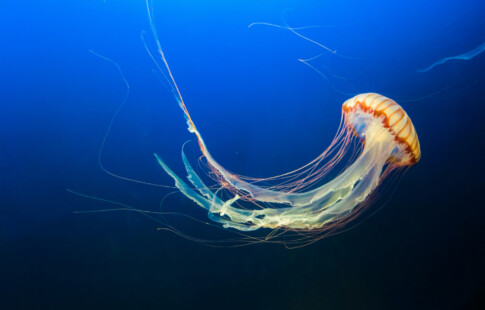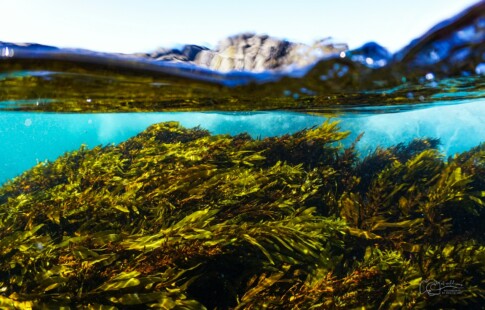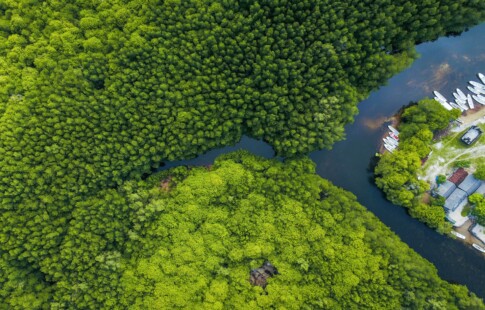
Ocean Heat Waves Threaten Marine Wildlife
We are reader-supported. When you buy through links on our site, we may earn affiliate commission.
You usually hear on the news about large heat waves that occur over land, but we rarely hear about them happening in the ocean. They do take place, and according to a new study published in Nature Climate Change, they’re becoming more frequent.
The paper, titled Marine Heatwaves Threaten Global Biodiversity and the Provision of Ecosystem Services, says marine heat wave days have increased by more than 54 percent over the last 30 years. These periods of abnormally high water temperatures for a given region not only became more frequent but also began lasting longer over the study period.
These trends, the study’s authors wrote, is consistent with decreasing amounts of marine life. Marine heat waves are another stress on seas that are already facing pollution, overfishing, declining oxygen levels, increasing acidity and other challenges.
To get an overview of global marine heat wave trends over the last few decades, the team of researchers looked at 116 studies that provided them with data from more than 1,000 ecological records. The group, which was led by Dan Smale of the United Kingdom’s Marine Biological Association and included researchers from seven countries, used these existing datasets to determine the amount of biodiversity within various regions.
The researchers found that areas with dense biodiversity that underwent warming were at especially high risk of suffering harm to their ecosystems. This damage tends to have impacts on neighboring ecosystems as well. The paper identified three areas that have suffered exceptionally severe outcomes from warming — coral reefs in the Caribbean, kelp forests off the coast of California and seagrass in Australia.
Impacts of Marine Heat Waves
Warming ocean temperatures cause damage by disrupting the normal function of ocean ecosystems. Species may not be able to live in the warm temperatures caused by heat waves. Increasing water temperature is also linked to other issues. For every degree of warming, oxygen concentration declines by 2 percent.
Heat waves have an especially severe impact on stationary plants and animals that can’t migrate to escape the heat. When corals are exposed to temperatures that are higher than usual, they become stressed, lose their symbiotic algae and turn white rather than their typical bright colors. Bleached coral is more vulnerable and will die if the stress continues for too long.
Around one-quarter of all marine species live in and around coral reefs. When a species that is so fundamental to an ecosystem dies off, the impacts can be devastating. Many of the life that relies on that bedrock species may exhibit behavioral changes, die off or be forced to move to cooler waters.
In 2011, a heat wave killed vast amounts of kelp forests and seagrass meadows, as well as the abalone and fish that relied on them. A 2012 heat wave forced lobster stocks that usually live off the eastern coast of the United States to move toward Canada.
Heat Waves and Biodiversity
Ocean heat waves and the resulting biodiversity loss could eventually have a significant impact on food security and economies that depend on the ocean. Another recent study published in the journal Science found that fish populations in critical fisheries around the globe have declined by approximately 4 percent. In the North Sea and the Sea of Japan, the decline was more than 30 percent.
Even larger sea animals can suffer severe deadly consequences as a result of heat waves. The heat wave known as “the Blob” occurred off the coast of California, increased temperature by more than 10 F and lasted for longer than a year. The event, which did garner some media attention, led to the growth of toxic algae blooms, the closing of crab fisheries, and the death of whales, sea lions and sea birds.
Marine heat waves could also make oceans less efficient absorbers of carbon dioxide. The sea helps reduce the impacts of climate change by absorbing about 25 percent of the carbon dioxide that gets released into the atmosphere. It also absorbs more than 90 percent of the excess heat created by global warming. As marine flora dies off, however, it releases the carbon dioxide that it stores into the atmosphere, worsening the greenhouse effect that’s causing climate change.
What Can We Do?
What can we do about the increasing frequency and duration of marine heat waves? Managing fisheries in a climate-conscious way can help mitigate impacts. Continuous monitoring of ocean temperatures and continued research into the issue may also help us improve our understanding of ocean warming, its implications and how to respond to heat waves. Taking steps to protect the overall health of the oceans, such as purchasing ocean-friendly products, may also help.
Marine heat waves will continue to occur, however, until we address the underlying issue — climate change. The only way to prevent heat waves, in the long run, is to reduce our greenhouse gas emissions.
Share on
Like what you read? Join other Environment.co readers!
Get the latest updates on our planet by subscribing to the Environment.co newsletter!
About the author

Jane Marsh
Starting from an early age, Jane Marsh loved all animals and became a budding environmentalist. Now, Jane works as the Editor-in-Chief of Environment.co where she covers topics related to climate policy, renewable energy, the food industry, and more.





